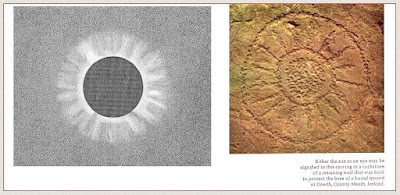Ohio's Great Serpent Mound And Solar Eclipses
I have reasonable grounds to believe that the Great Serpent Mound in Ohio represents the mythical sun-eating eclipse serpent that diverse ancient cultures believed in, or at least "imagined", to explain the sun being slowly but progressively, indeed relentlessly, "swallowed" during solar eclipses. This mythical aka imaginary solar eclipse "serpent" was inspired not only by "as above so below" comparisons with snakes slowly but progressively eating their prey, especially egg-eating snakes, but also the serpent-like pattern of the path of the moon above and below the ecliptic once ancient astronomers figured out that solar eclipses were caused by the path of the moon crossing over the path of the sun aka the ecliptic.
"Long thought to have been made by the Adena peoples (1000–100 B.C.) based on the contents of burials discovered nearby, recent archaeological research into the structure of the mound itself has suggested that the serpent is later in date (1000–1200 A.D.)."
In that I have reasonable grounds to believe that most ancient geoglyphs are religious art inspired by, and responding to, observations of the total solar eclipse "eye of God", this NASA map shows that a total solar eclipse took place above Ohio not long before 1000 A.D. on July 29, 957 CE.
There was also a total solar eclipse not far to the north of Ohio on July 20, 985 CE.
So that is three possibilities for the builders of Ohio's Great Serpent Mound to observe the total solar eclipse "eye of God" not long before 1000 CE.
Here is a series of links to maps of solar eclipse paths in NASA's World Atlas of Solar Eclipse Paths showing that multiple solar eclipses were observable from Ohio's Great Serpent Mound between 1000 CE and 1200 CE:
A sunrise annular eclipse, plus three total solar eclipses, and another annular eclipse to the south:
Two total solar eclipses above and below Ohio which would have been observed as strong partial solar eclipses in Ohio:
A total solar eclipse not far to the west of Ohio, and a sunrise annular eclipse to the south:



Comments
Post a Comment